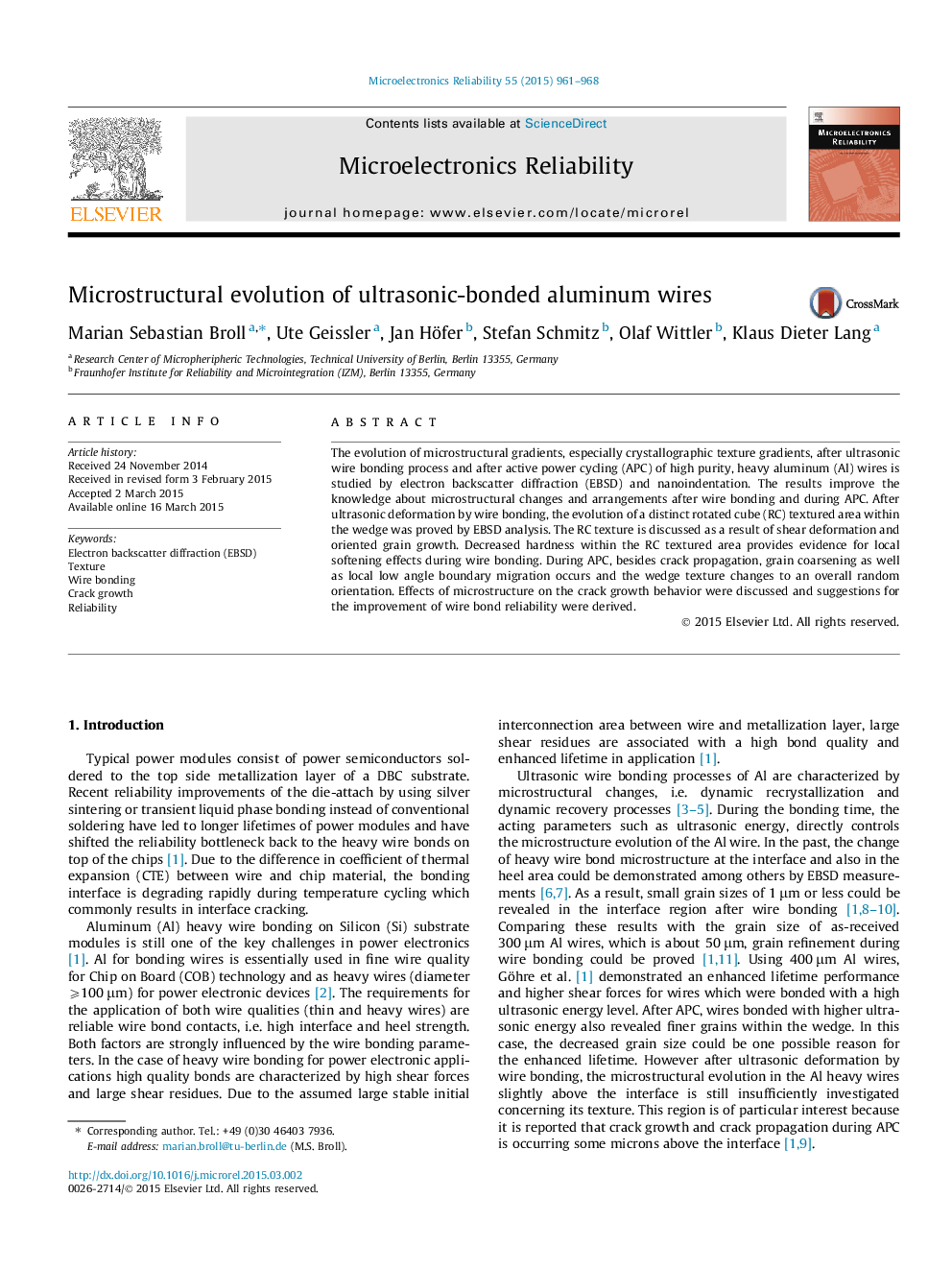| Article ID | Journal | Published Year | Pages | File Type |
|---|---|---|---|---|
| 548987 | Microelectronics Reliability | 2015 | 8 Pages |
•The microstructural evolution of ultrasonic bonded aluminum wires is studied.•We observed the evolution of a rotated cube textured area after wire bonding.•The crack growth behavior during active power cycling is characterized.•Microstructural effects on wire bond reliability were discussed and assessed.
The evolution of microstructural gradients, especially crystallographic texture gradients, after ultrasonic wire bonding process and after active power cycling (APC) of high purity, heavy aluminum (Al) wires is studied by electron backscatter diffraction (EBSD) and nanoindentation. The results improve the knowledge about microstructural changes and arrangements after wire bonding and during APC. After ultrasonic deformation by wire bonding, the evolution of a distinct rotated cube (RC) textured area within the wedge was proved by EBSD analysis. The RC texture is discussed as a result of shear deformation and oriented grain growth. Decreased hardness within the RC textured area provides evidence for local softening effects during wire bonding. During APC, besides crack propagation, grain coarsening as well as local low angle boundary migration occurs and the wedge texture changes to an overall random orientation. Effects of microstructure on the crack growth behavior were discussed and suggestions for the improvement of wire bond reliability were derived.
Graphical abstractFigure optionsDownload full-size imageDownload as PowerPoint slide
